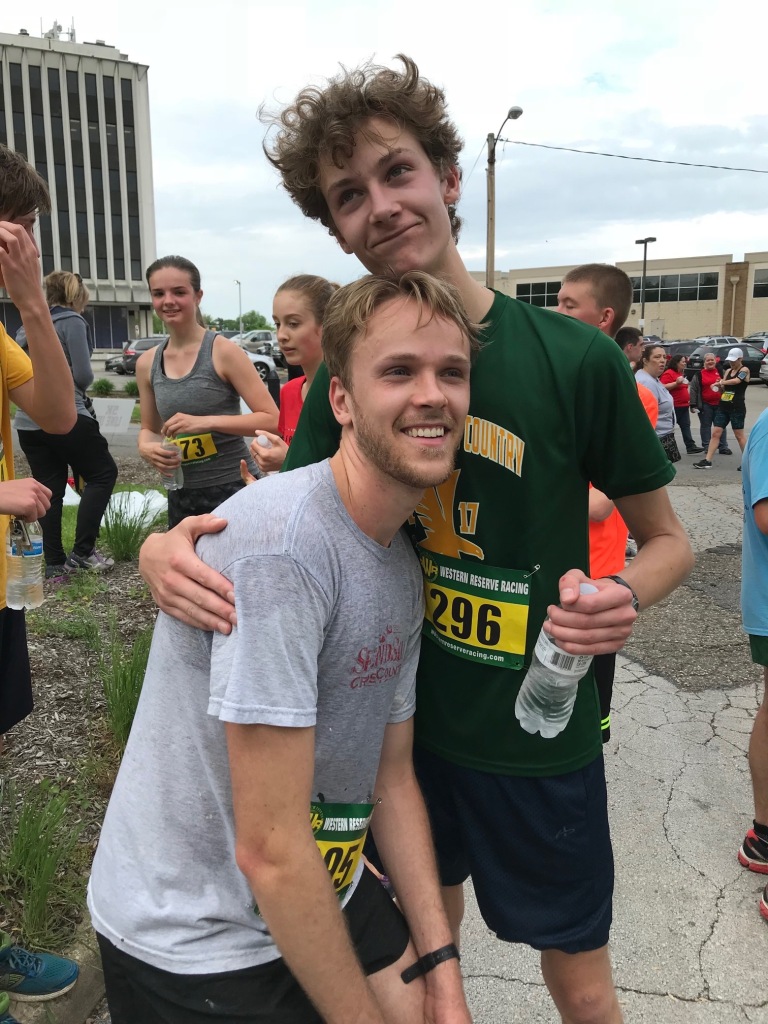Back when street lamps were powered by gas, someone went by foot at day’s end and lit them one by one. Last week, it felt as though each of Akron’s trees had been similarly visited when leaves erupted seemingly overnight on branches long bare.
It’s hard not to feel renewed by each spring, but especially this one. Not only because it marks the end of one of the hardest winters in years, but also because the worst of the two-year COVID pandemic may finally have receded with this year’s snow piles.
In the past few weeks, I’ve seen repeated announcements of various events being held in person for the first time in three years. Dances, fundraisers, fish dinners, pancake breakfasts and, next Saturday, May 21, the annual Race for Case.
Ten years ago, Craig Sampsell, one of Case Elementary’s interventionists, along with two other faculty members, Sarah Core and Jen Victor, organized the first Race for Case to raise money to create a computer lab, purchase iPads and a smart board for the building.
In the years since, the Race for Case has funded inclusive equipment (read: accessible for kids with physical disabilities) and a rubberized surface for the school’s playground, as well as a greenhouse slated to be built at the end of this year.
According to Sampsell, the proceeds from this year’s race will fund “school assemblies focused on social emotional learning as well as science, math and reading. We want to create the fun and joy of going to school again and increase the opportunities for our students to interact with outside resources. We will also see if we can fund a school-wide field trip.”
According to a recent New York Times piece by David Leonhardt, in the 1990s and early 2000s, the United States increased both accountability and funding for public schools. “Typically, the funding increases were larger for low-income schools than for high-income schools. That may help explain why racial gaps in reading and math skills declined.”
In the decades since, the data on funding increases for low-income public schools indicates that greater funding does, in fact, result in better outcomes, and not just while kids are in school, but long after they’ve graduated.
The primary metric businesses look at when locating in a community is the quality of the workforce. This alone should cause all legislators, regardless of party, to prioritize maximum funding for public K-12 schools.
Unfortunately, that has not happened in many states, including Ohio. As a popular bumper sticker reads: “It will be a great day when our schools have all the money they need, and our air force has to have a bake sale to buy a bomber.”
Until schools have all the funding they need, supporting them with fundraisers, like the Race for Case, remains important, if not vital.
This year’s race is the first of 10 in Akron Promise’s City Series Neighborhood Races. People who participate in four of the series’ races will be awarded medals. Rest assured, you don’t have to be a competitive athlete to take part. Participants ranging from those in baby buggies to elders using canes can run, walk or stroll the course.
Unlike in years past, when the race started and ended at Hardesty Park, this year it will be held at the school (1420 Garman Road). There’s a 1-mile race that starts at 9:30 a.m., followed by the 5K at 10. Registration is online at bit.ly/race4case5k and will also be available onsite that morning.
Perhaps best of all, at least from the perspective of the kids, after the races, there will be a carnival with inflatables and games for all ages.
In 2018, my third child (who identifies as “they/their”) was at the time a junior in high school and came in second at the Race for Case. We were excited for their last year on Firestone’s cross country team that upcoming fall, believing they had a strong chance of making it to the state championships.
But that summer, they developed mononucleosis, which dragged on for many months. Eventually a rheumatologist diagnosed my tall, fit 18-year-old with chronic fatigue syndrome. That 2018 Race for Case was the last 5K they will likely ever compete in, making the event especially poignant for us.
In the past two years, all of humanity learned how that which is taken for granted can suddenly end, or at least go on hiatus. As much of community life finally resumes, I can’t think of a better way to celebrate this spring than by coming together to have fun raising money as an investment in some of our youngest citizens.

